Confused by the terminology? Want to learn more about dental specialties? Curious about an upcoming procedure? Browse our patient education topics.
Patient education is the process by which health professionals and others impart information to patients and their caregivers that will alter their health behaviors or improve their health status.
Jump to section:
- Cariology - Cavities, tooth decay
- Endodontics - Root canals
- Obstructive Sleep Apnea
- Oral and Maxillofacial Surgery - Dental extractions, including wisdom teeth
- Orthodontics - Braces, Retainers
- Pediatric Dentistry - Dentistry for children
- Periodontics - Bone and gum disease
- Prosthodontics - Crowns, bridges, and full or partial dentures
- Restorative - Fillings, crowns, bridges, implant restorations, veneers, bleaching, CAD/CAM (same day) crowns.
CARIOLOGY
Cavities, Tooth Decay
What is Cariology?
Cariology is the study of dental caries and cariogenesis. Cariologists treat tooth decay (dental caries).
How do I avoid cavities?
Tips to prevent cavities:
- Brush your teeth twice a day with a fluoride toothpaste
- Floss regularly
- Avoid or limit candy and other foods high in sugar/starch
- Avoid or limit snacking
- Do not smoke
- Visit your dentist regularly
For more information, please visit the National Institute of Dental Research and Craniofacial Research.
ENDODONTICS
Root Canals
What is an endodontist?
According to the American Association of Endodontists:
While all endodontists are dentists, less than three percent of dentists are endodontists. Just like a doctor in any other field, endodontists are specialists because they’ve completed an additional two or more years of training beyond dental school. Their additional training focuses on diagnosing tooth pain and root canal treatment and other procedures relating to the interior of the tooth. In many cases, a diseased tooth can be saved with endodontic treatment. For this reason, endodontists proudly refer to themselves as Specialists in Saving Teeth.
Please visit the American Association of Endodontists for more information.
What is a root canal?
At the center of every tooth is a hollow area that houses soft tissues, such as the nerve, blood vessels, and connective tissue. This hollow area contains a relatively wide space in the coronal portion of the tooth called the pulp chamber. These canals run through the center of the roots, similar to the way pencil lead runs through a pencil. The pulp receives nutrition through the blood vessels, and sensory nerves carry signals back to the brain. A tooth can be relieved from pain if there is irreversible damage to the pulp, via root canal treatment.
OBSTRUCTIVE SLEEP APNEA
What is Obstructive Sleep Apnea?
Obstructive sleep apnea causes breathing to repeatedly stop and start during sleep. It is a potentially serious sleep disorder.There are several types of sleep apnea, but the most common is obstructive sleep apnea. This type of apnea occurs when your throat muscles intermittently relax and block your airway during sleep. A noticeable sign of obstructive sleep apnea is snoring.
To learn more about OSA symptoms, causes, risk factors and complications please visit Mayo Clinic Obstructive Sleep Apnea and the American Academy of Dental Sleep Medicine.
Source Mayo Clinic.
ORAL AND MAXILLOFACIAL SURGERY
Dental Extractions (including wisdom teeth)
What is oral and maxillofacial surgery?
Oral and maxillofacial surgery (OMS or OMFS) specializes in treating many diseases, injuries and defects in the head, neck, face, jaws and the hard and soft tissues of the oral (mouth) and maxillofacial (jaws and face) region. It is an internationally recognized surgical specialty.
Adapted from Mayo Clinic Obstructive Sleep Apnea
What are wisdom teeth?
Your mouth goes through many changes in your lifetime. One major dental milestone that usually takes place between the ages of 17 and 21 is the appearance of your third molars. Historically, these teeth have been called wisdom teeth because they come through at a more mature age.
When they come through correctly, healthy wisdom teeth can help you chew. It’s normal to feel a little discomfort when your wisdom teeth appear, but if you have pain, see your dentist immediately.
Source American Dental Association.
ORTHODONTICS
Braces, Retainers
What is orthodontics?
Orthodontics and dentofacial orthopedics is the formal name of the dental specialty concerned with the diagnosis, prevention, interception, guidance and correction of bad bites. The purpose of orthodontic treatment is to create a healthy bite—straight teeth that properly meet opposing teeth in the opposite jaw. A good bite makes it easier for you to bite, chew and speak.
If your teeth are crowded, protrusive, spaced too far apart, meet in an abnormal way, or do not meet at all, correction may be recommended. Braces and aligners are the “appliances” orthodontists most commonly use to guide your teeth into their proper positions. Retainers preserve and stabilize the results of your orthodontic treatment.
Source American Dental Association.
Can an adult get braces?
In the past, orthodontic treatment was associated with children and teens, but today many adults seek orthodontic treatment to correct long-standing problems, or problems that stem from maturational changes. Orthodontists can help people of any age achieve a healthy and beautiful smile.
Source American Dental Association.
PEDIATRIC DENTISTRY
Dentistry for Children
What is pediatric dentistry?
Pediatric dentists are primary and specialty oral care providers for infants and children through adolescence, including those with special health needs. A pediatric dentist has two to three years specialty training following dental school and limits his/her practice to treating children only.
Source American Dental Association.
At what age does my child need to see a dentist?
A child should visit the dentist by age 1 or within six months of the arrival of the child's first tooth.
PERIODONTICS
Bone and Gum Disease
What is periodontics?
Periodontics is the dental specialty focusing exclusively in the inflammatory disease that destroys the gums and other supporting structures around the teeth. A periodontist is a dentist who specializes in the prevention, diagnosis, and treatment of periodontal, or disease, and in the placement of dental implants. Periodontists receive extensive training in these areas, including three additional years of education beyond dental school. As specialists in periodontal disease, they are experts in the latest techniques for diagnosing and treating periodontal disease. They are also trained in cosmetic periodontal procedures.
Periodontists treat cases ranging from mild gingivitis to more severe periodontitis. Periodontists offer a wide range of treatments, such as scaling and root planing (the cleaning of infected root surfaces), root surface debridement (the removal of damaged tissue), and regenerative procedures (the reversal of lost bone and tissue). When necessary, periodontists can also perform surgical procedures for patients with severe gum disease. Additionally, periodontists are trained in the placement, maintenance and repair of dental implants.
Source American Dental Association.
What is gingivitis?
Gingivitis is the early stage of gum disease. Gum disease, also known as periodontal disease, is an infection of the tissues that surround your teeth, and is caused by a buildup of plaque. In its early stages, symptoms may include:
- gums that bleed easily
- red, swollen, tender gums
- bad breath
Source American Dental Association.
Is there a relationship between gingivitis and diabetes?
When you have diabetes, high blood sugar can take a toll on your entire body — including your teeth and gums.
Diabetes reduces your ability to fight bacteria. If you don't remove plaque with regular brushing and flossing, it'll harden under your gumline into a substance called tartar (dental calculus).
PROSTHODONTICS
Crowns, Bridges, Dentures
What is a Prosthodontist?
Prosthodontists are experts in the restoration and replacement of teeth - they make smiles look beautiful and function the way they should. After completing four years of dental school, Prosthodontists receive an extra three years of specialized training in an American Dental Association (ADA) accredited graduate program. Prosthodontics is one of the nine dental specialties recognized by the ADA.
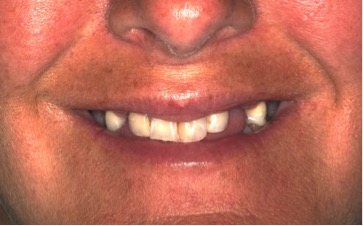
Photo courtesy of Dr. Garcia Hammaker
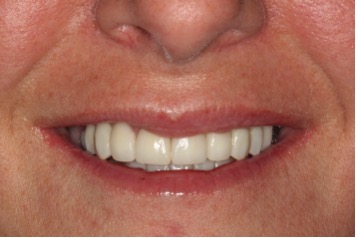
Photo courtesy of Dr. Garcia Hammaker
REPLACING LOST TEETH
Loss of natural teeth, whether in an accident or as part of the aging process, can be traumatic and affect your outlook on life. Simple pleasures - like smiling or going out to eat - become a source of stress or embarrassment. Crowns, bridges, and full or partial dentures are some of the procedures that can help you regain your smile and improve your appearance and self-confidence.
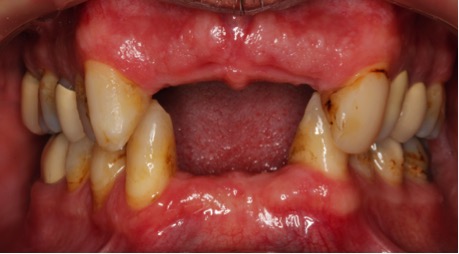
Photo courtesy of Dr. Garcia Hammaker
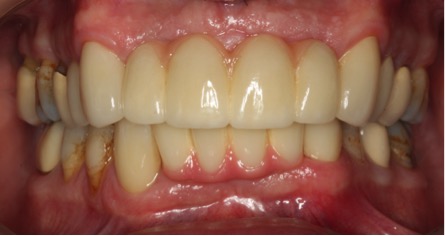
Photo courtesy of Dr. Garcia Hammaker
Another option is dental implants, a more permanent solution that has improved greatly over the last ten years, thanks to the pioneering techniques of prosthodontists. Whether you need to replace one tooth or many, a prosthodontist will work with you through every step of dental implant treatment, from an initial consultation through follow-up care.
Single tooth implant:
All photos courtesy of Dr. Garcia Hammaker and Dr. Saglik
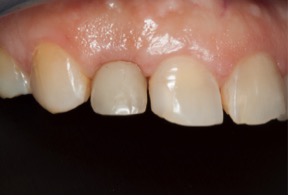
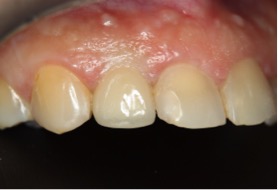

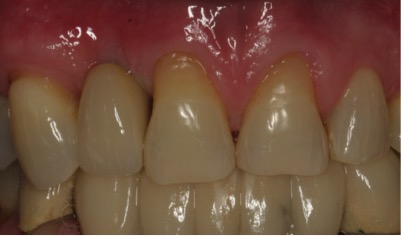
COMPLEX CARE MANAGEMENT
Prosthodontists are trained to manage the most complex dental restorations. From patients requiring rehabilitation after a traumatic injury to creating new smiles for those born with genetic facial deficits, prosthodontists have the special skills needed to restore smiles to the best they can be.
Occlusal bite splint:
All photos courtesy of Dr. Oh
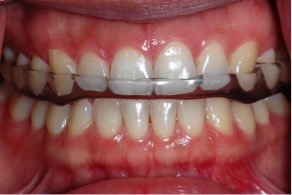
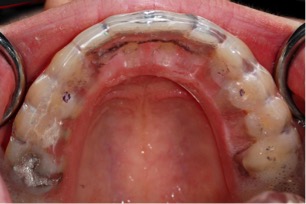
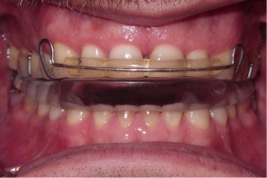
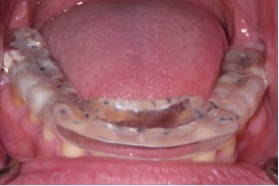
Segmented bridge:
All photos courtesy of Dr. Oh
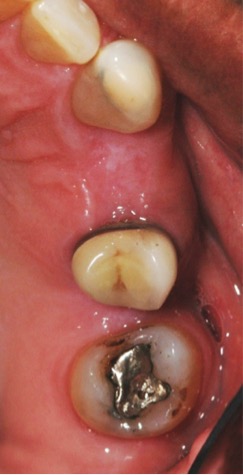
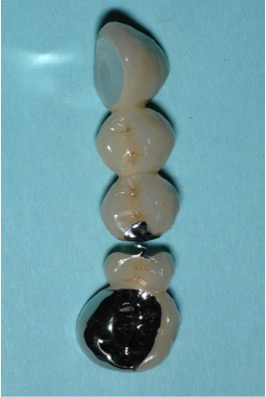
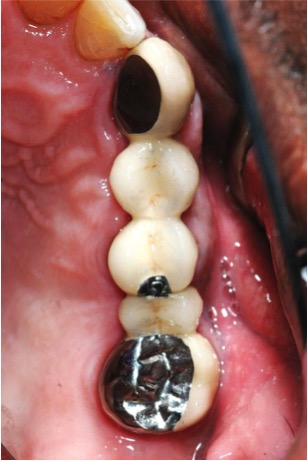
COSMETIC/ESTHETIC DENTISTRY
A healthy smile has a significant impact on self-esteem. If you are like many Americans and are unhappy about the "look" of your smile, you may want to consult a prosthodontist.
With their advanced training, prosthodontists can improve your appearance by fixing broken, discolored or misshapen teeth and associated structures.
Ceramic veneers (7-year follow up):
All photos courtesy of Dr. Oh
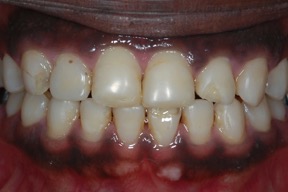
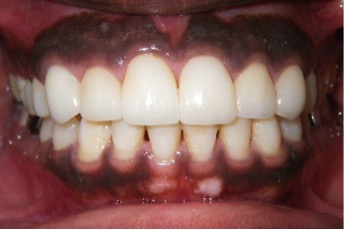

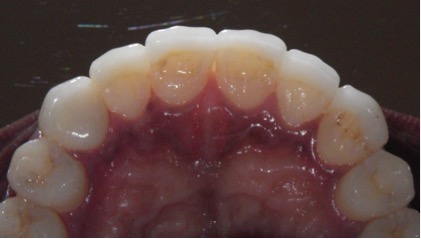
THE BENEFITS OF GOING TO A 'PRO'
If you are seeking cosmetic or reconstructive dental work, you should do research before making a decision in order to ensure proper care. As ADA recognized specialists, prosthodontists are qualified to offer care in state-of-the-art procedures and techniques, such as:
- Dental implants
- Cosmetic dentistry
- Complex care management involving multiple specialists
- Complete and removable partial dentures
- Replacing lost teeth
- Special needs of geriatric patients
- Children born with cleft palate or missing teeth
- Temporomandibular joint syndrome/disorder
- Traumatic injuries
- Snoring and sleep disorders
- Maxillofacial prosthetic procedures such as oral cancer reconstruction and continuing care
FOR MORE INFORMATION
How Long do Crowns, Veneers, Bridges Last? (video from American College of Prosthodontists)
What is a dental implant?
Dental implants are small titanium screws that serve as artificial root replacements. They fit into small holes your dentist prepares in your jawbone. Your own bone tissue fuses to the implant, permanently securing it in place. Dental implants are designed to support tooth restorations (crowns or bridges).
- without the root structure of a natural tooth present the jawbone can shrink, making your face look older than it is
- there are no loose parts to worry about losing
- the dental implant is stable and comfortable
- dental implants are so natural looking it is often difficult to tell them from your natural teeth
- normally, a dental implant will serve its owner for life
RESTORATIVE DENTISTRY
What is restorative dentistry?
Restorative dentistry is the study, diagnosis and integrated management of diseases of the teeth and their supporting structures and the rehabilitation of the dentition to functional and aesthetic requirements of the individual. Restorative dentistry encompasses the dental specialties of endodontics, periodontics and prosthodontics and its foundation is based upon how these interact in cases requiring multifaceted care. In addition, restorative needs not derive from only diseases of the teeth like cavities and medical conditions but also from trauma. "Traumatic injuries to anterior (front) teeth are frequently encountered in children and adults".
Source wikipedia.

